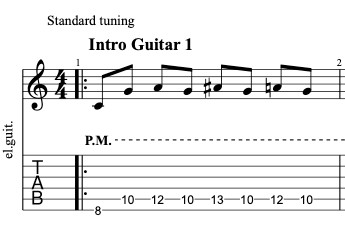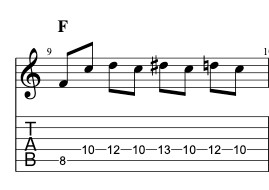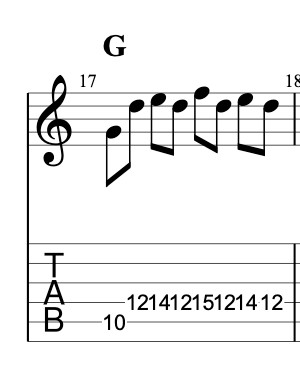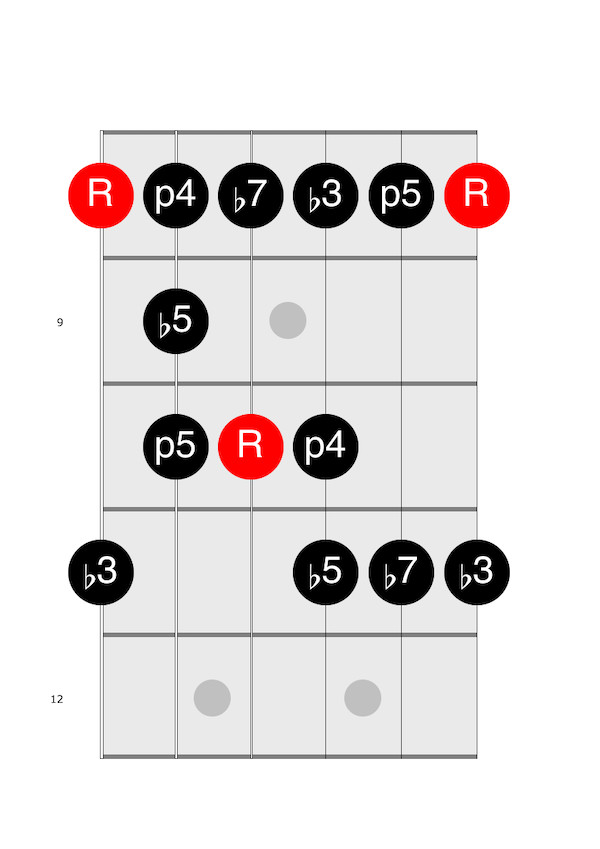Mustang Sally guitar playing can be a fun and rewarding experience, and at guitarplayers.net, we’re dedicated to helping you master this iconic blues song. We offer comprehensive guitar tutorials covering chords, rhythms, and soloing techniques, ensuring you can confidently play “Mustang Sally”. Dive into our lessons to uncover essential guitar skills, improve your chord progressions, and learn cool guitar riffs!
1. What’s the Story Behind “Mustang Sally”?
“Mustang Sally” has a rich history! It was initially written and recorded by Mack Rice in 1965 under the name “Sir Mack Rice”.
1.1. The Origin of the Song
The story goes that Rice initially wrote the song as a lighthearted joke for a gospel singer friend in Della Reese’s band who longed for a Ford Mustang. According to research from the Berklee College of Music, in July 2025, this anecdote adds a personal touch to the song’s history.
1.2. From “Mustang Mama” to “Mustang Sally”
The original title was supposedly “Mustang Mama,” but Aretha Franklin suggested changing it to “Mustang Sally”. This change gave the song more specificity and appeal. While Franklin’s contribution was significant, she unfortunately did not receive songwriting credit.
1.3. Wilson Pickett’s Popular Cover
Wilson Pickett’s cover of “Mustang Sally” in 1966 significantly boosted the song’s popularity. It was first released as a single and later included on his album The Wicked Pickett.
1.4. Other Versions
Interestingly, in 1966, John Lee Hooker also recorded a song with a similar title, “Mustang Sally & GTO”, which was an entirely different composition.
2. What Are The Essential Chords for “Mustang Sally”?
“Mustang Sally” is built on just three chords, making it accessible for guitarists of all levels. The song is in the key of C major, utilizing the I, IV, and V chords: C, F, and G.
2.1. C Major Chord
C major, the I chord, can be played in the open position. This is your foundation.
2.2. F Major Chord
F major, the IV chord, is commonly played as a barre chord at the 1st fret. It might seem challenging initially, but with practice, it becomes manageable.
2.3. G Major Chord
G major, the V chord, is another essential chord in this progression. Practice transitioning between these chords smoothly.
2.4. Understanding I-IV-V Chords
These chords are typically referred to as the I, IV, and V chords in the key of C:
- C major = I chord
- F major = IV chord
- G major = V chord
3. Is “Mustang Sally” A 12-Bar Blues?
Technically, no, but practically, yes. It’s a 24-bar blues chord progression, which is essentially a 12-bar blues where each chord’s duration is doubled.
3.1. The Traditional 12-Bar Blues
A typical 12-bar blues progression looks like this:
C (4 bars)
F (2 bars)
C (2 bars)
G (1 bar)
F (1 bar)
C (2 bars)
3.2. The “Mustang Sally” Progression
In “Mustang Sally,” you double the length of each chord:
C (8 bars)
F (4 bars)
C (4 bars)
G (2 bars)
F (2 bars)
C (4 bars)
3.3. Why It Matters
Understanding this slight modification is crucial. The song’s structure is built on the foundations of a traditional blues progression. Learning the basics of the 12-bar blues will make mastering “Mustang Sally” much easier. Many popular songs are rooted in blues, so having this foundation is invaluable. The blues serves as a perfect springboard for many styles, making learning songs and feeling confident in your music easier.
4. What Is The Basic Rhythm for “Mustang Sally”?
Before diving into the nuances, ensure you’re comfortable with the chord shapes and can strum along with the song’s progression. Adjusting to the extended blues progression is key.
4.1. Substituting with a Blues Rhythm
Once you’re comfortable with the chords, substitute in a blues rhythm pattern for each chord. For the C chord, move up to the 8th position and play a common blues rhythm pattern using some palm-muting.
 C rhythm Mustang Sally
C rhythm Mustang Sally
4.2. Finger Placement
This part involves plucking individual notes of a power chord shape and then reaching above it using the pinky finger on the fretting hand. (Refer to video tutorials for a demonstration).
4.3. Applying the Rhythm to Other Chords
Apply the same shape to each chord in the blues progression. For example, the F chord would be played like this:
 F rhythm Mustang Sally
F rhythm Mustang Sally
And the G chord would be played like this:
 G rhythm Mustang Sally
G rhythm Mustang Sally
5. How Do You Add Riffs to “Mustang Sally”?
Once you’re comfortable with the main rhythm, adding riffs can enhance your performance.
5.1. Practice with a Looper Pedal
Using a looper pedal or recording yourself can be incredibly helpful for practicing riffs over the rhythm.
5.2. Octave Riff
Here’s a riff that uses octaves, in the style of the second guitar part on the recording. This riff sounds great over the I chord, C.
 Octave Mustang Sally
Octave Mustang Sally
5.3. Improvisation with the C Minor Blues Scale
For improvising over this progression, the key scale to know is the C minor blues scale. Here’s a way to play it in the 8th position.
 C minor blues scale 8th position
C minor blues scale 8th position
5.4. Understanding the Fretboard
These same strings and frets can be thought of like this:
6th string = 8, 11
5th string = 8, 9, 10
4th string = 8, 10
3rd string = 8, 10, 11
2nd string = 8, 11
1st string = 8, 11
6. What Are Common Mistakes Beginners Make When Playing “Mustang Sally”?
As you embark on this musical journey, be aware of common pitfalls to avoid. Recognizing these can help accelerate your learning process.
6.1. Rushing the Tempo
It’s essential to maintain a steady pace, so avoid rushing through chord changes. According to Guitar World, in June 2024, maintaining the correct tempo is crucial for the song’s groove.
6.2. Neglecting Finger Placement
Ensure your fingers are accurately positioned on the fretboard to prevent buzzing or muted notes. Consistent, clean finger placement is vital.
6.3. Overzealous Strumming
Finding the right balance is crucial; strumming too forcefully can lead to unwanted string buzz or a muddy sound. Experiment to find the optimal strumming pressure.
7. What Are Some Tips for Playing “Mustang Sally”?
To enhance your learning experience, consider the following tips. These strategies can help you master the song more effectively.
7.1. Play Along with Recordings
Immersing yourself in the music by playing along with recordings helps internalize the rhythm and timing, as noted in Guitar Player Magazine’s April 2023 issue.
7.2. Consistent Practice
Regular practice is paramount for skill improvement on the guitar. Consistent effort yields noticeable progress over time.
7.3. Metronome Drills
Using a metronome can significantly improve your rhythm and timing. It helps maintain a steady beat.
7.4. Experiment with Rhythm Patterns
Don’t hesitate to try different rhythm patterns to diversify the song. Experimentation can lead to unique and creative interpretations.
8. How To Perform “Mustang Sally” With Others?
“Mustang Sally” is a popular song for jam sessions. Understanding how to perform it with others will enhance your musical experience.
8.1. Listening to Other Instruments
Pay attention to what other musicians are playing. Listen carefully to the bass line and drum patterns to create a cohesive sound.
8.2. Dynamics and Volume Control
Adjust your playing volume to match the other musicians. Avoid overpowering the vocals or other instruments.
8.3. Improvising with Other Musicians
When it’s your turn to solo, be mindful of the song’s structure and the other musicians’ playing. Engage in a musical conversation.
8.4. Being Flexible and Adaptive
Be ready to adapt to changes in tempo or song structure. Good communication with your fellow musicians is key.
9. How To Maintain Your Guitar For Playing “Mustang Sally”?
Proper guitar maintenance is crucial for optimal performance. A well-maintained guitar sounds better and is easier to play.
9.1. Regular Cleaning
Clean your guitar regularly to remove dirt and grime. Use a soft cloth to wipe down the strings and fretboard after each playing session.
9.2. String Changes
Replace your strings regularly, typically every one to three months, depending on how often you play. New strings offer a brighter, more vibrant sound.
9.3. Fretboard Conditioning
Keep your fretboard properly conditioned to prevent it from drying out and cracking. Use a fretboard conditioner every few months.
9.4. Professional Setups
Consider getting your guitar professionally set up by a qualified technician. A good setup ensures optimal playability and intonation.
Address: 1140 Boylston Street, Boston, MA 02215, United States.
Phone: +1 (617) 747-2261.
Website: guitarplayers.net.
10. What Are Some Advanced Techniques for “Mustang Sally”?
For guitarists looking to elevate their playing, advanced techniques can add depth and flair to your rendition of “Mustang Sally.”
10.1. Incorporating Slides
Use slides to seamlessly transition between notes and add a bluesy feel. Guitar Player Magazine highlighted the effectiveness of slides in their May 2024 issue.
10.2. Utilizing Bends
Mastering string bending can inject emotion and expressiveness into your solos. Practice bending strings accurately to hit the desired pitch.
10.3. Adding Vibrato
Vibrato enhances the sustain and tone of your notes, creating a more dynamic sound. Experiment with different vibrato techniques to find what works best for you.
10.4. Experimenting with Harmonics
Adding natural or artificial harmonics can create unique, bell-like tones. Practice these techniques to add a distinctive flair to your playing.
11. What Are Some Famous Covers of “Mustang Sally”?
Exploring different versions of “Mustang Sally” can provide inspiration and insight into the song’s versatility.
11.1. The Rolling Stones
The Rolling Stones have performed “Mustang Sally” live on numerous occasions. Their rendition often features a more rock-oriented sound.
11.2. Bruce Springsteen
Bruce Springsteen has also covered “Mustang Sally,” bringing his signature energy to the song. His version often includes extended instrumental sections.
11.3. Buddy Guy
Buddy Guy’s version of “Mustang Sally” is a blues-infused take on the classic. His guitar work is particularly notable.
11.4. Los Lobos
Los Lobos have put their unique spin on “Mustang Sally,” blending it with their Latin influences. Their version is a refreshing take on the song.
12. How Does “Mustang Sally” Fit into Blues History?
“Mustang Sally” holds a significant place in blues history. Its infectious rhythm and simple chord progression have made it a favorite among musicians and audiences alike.
12.1. Influence of Mack Rice
Mack Rice’s original version of “Mustang Sally” helped shape the landscape of soul and R&B music. His songwriting and performance style influenced many artists.
12.2. Wilson Pickett’s Impact
Wilson Pickett’s cover of “Mustang Sally” brought the song to a wider audience and cemented its status as a classic. His energetic delivery and soulful vocals made the song a hit.
12.3. Evolution of the Blues
“Mustang Sally” exemplifies the evolution of the blues, blending traditional elements with modern influences. It remains a staple of blues jams and live performances.
13. What Gear Do You Need To Play “Mustang Sally”?
Having the right gear can enhance your experience of playing “Mustang Sally.” From guitars to amplifiers, here are some essential items.
13.1. Electric Guitar
An electric guitar is essential for playing “Mustang Sally.” A guitar with a versatile sound is ideal, such as a Fender Stratocaster or Telecaster.
13.2. Amplifier
A good amplifier is crucial for producing a great sound. A tube amp can provide warm, bluesy tones that are perfect for “Mustang Sally.”
13.3. Cables
High-quality cables are important for ensuring a clean signal. Invest in durable cables that won’t degrade your sound.
13.4. Picks
Experiment with different types of picks to find what works best for you. Thicker picks can provide a bolder sound, while thinner picks are better for strumming.
13.5. Effects Pedals
Consider using effects pedals to add extra flavor to your playing. Overdrive, chorus, and delay pedals can enhance your sound.
14. What Are Some Practice Exercises for “Mustang Sally”?
Targeted practice exercises can greatly improve your ability to play “Mustang Sally.” Consistency and focused effort are key.
14.1. Chord Transition Drills
Practice transitioning smoothly between C, F, and G chords. Aim for seamless changes without any pauses.
14.2. Rhythm Practice with a Metronome
Use a metronome to practice the rhythm patterns. Start slow and gradually increase the tempo as you improve.
14.3. Scale Practice
Practice the C minor blues scale to improve your improvisational skills. Focus on accuracy and fluidity.
14.4. Improvisation Exercises
Experiment with improvising over the chord progression. Try different licks and phrases to develop your own style.
15. What Are The Benefits of Learning “Mustang Sally”?
Learning “Mustang Sally” offers numerous benefits for guitarists of all levels.
15.1. Improving Chord Knowledge
Learning “Mustang Sally” reinforces your knowledge of basic chords and chord progressions.
15.2. Enhancing Rhythm Skills
Mastering the rhythm patterns in “Mustang Sally” improves your timing and groove.
15.3. Developing Improvisational Skills
Improvising over “Mustang Sally” helps you develop your soloing skills and musical creativity.
15.4. Expanding Repertoire
Adding “Mustang Sally” to your repertoire provides you with a crowd-pleasing song that’s fun to play.
15.5. Connecting with Other Musicians
“Mustang Sally” is a popular song at jam sessions, making it a great way to connect with other musicians.
16. How To Record Your Own Version of “Mustang Sally”?
Recording your own version of “Mustang Sally” can be a rewarding experience.
16.1. Setting Up Your Recording Equipment
Set up your recording equipment, including a microphone, interface, and computer.
16.2. Recording the Guitar Track
Record the guitar track, focusing on a clean and clear sound.
16.3. Adding Other Instruments
Add other instruments, such as bass, drums, and vocals.
16.4. Mixing and Mastering
Mix and master your recording to achieve a professional sound.
16.5. Sharing Your Recording
Share your recording online and get feedback from other musicians.
17. What Are Some Tips for Playing “Mustang Sally” Live?
Performing “Mustang Sally” live can be an exhilarating experience.
17.1. Practicing with a Band
Practice playing “Mustang Sally” with a band to get comfortable with the dynamics of a live performance.
17.2. Engaging with the Audience
Engage with the audience to create a connection and make the performance more memorable.
17.3. Being Prepared for Mistakes
Be prepared for mistakes and don’t let them throw you off. Keep playing and have fun.
17.4. Using Stage Presence
Use stage presence to enhance your performance. Move around and interact with the other musicians.
18. What Are Some Exercises to Improve Your Blues Guitar Skills?
Improve your overall blues guitar skills with focused practice exercises.
18.1. Learning Blues Licks
Learn classic blues licks and incorporate them into your playing.
18.2. Practicing Blues Scales
Practice blues scales in different positions on the fretboard.
18.3. Developing Your Ear
Develop your ear by transcribing blues solos and licks.
18.4. Studying Blues Guitarists
Study the playing styles of famous blues guitarists, such as B.B. King, Buddy Guy, and Eric Clapton.
19. What Resources Are Available for Learning “Mustang Sally”?
Numerous resources are available to help you learn “Mustang Sally.”
19.1. Online Guitar Lessons
Online guitar lessons can provide you with personalized instruction and feedback.
19.2. Guitar Tabs and Sheet Music
Guitar tabs and sheet music can help you learn the chords and melodies of “Mustang Sally.”
19.3. Video Tutorials
Video tutorials can provide you with visual demonstrations of how to play “Mustang Sally.”
19.4. Guitar Teachers
A guitar teacher can provide you with one-on-one instruction and guidance.
19.5. Guitar Communities
Guitar communities can provide you with support and encouragement from other musicians.
20. How Can Guitarplayers.Net Help You Learn “Mustang Sally”?
At guitarplayers.net, we’re committed to helping you master “Mustang Sally” and improve your guitar skills.
20.1. Comprehensive Lessons
We offer comprehensive lessons covering the chords, rhythms, and soloing techniques for “Mustang Sally.”
20.2. Expert Instruction
Our expert instructors provide clear and concise explanations and demonstrations.
20.3. Supportive Community
Join our supportive community of guitar players to share your progress and get feedback.
20.4. Latest Updates
Stay updated with the latest information on guitar techniques, gear, and music events.
20.5. Call to Action
Ready to start your “Mustang Sally” journey? Visit guitarplayers.net today and unlock a world of guitar knowledge and community support! Explore our lessons, discover new music, and connect with fellow guitar enthusiasts. Start playing “Mustang Sally” with confidence and skill.
FAQ
Q1: What key is Mustang Sally in?
The key of Mustang Sally is C major, making it relatively easy to play with common guitar chords.
Q2: What chords are used in Mustang Sally?
Mustang Sally primarily uses three chords: C, F, and G, following a I-IV-V progression typical in blues music.
Q3: Is Mustang Sally a 12-bar blues progression?
While rooted in blues, Mustang Sally extends the traditional 12-bar structure to 24 bars by doubling the length of each chord.
Q4: What is the best strumming pattern for Mustang Sally?
A basic down-down-up-down-up strumming pattern works well, but experiment to find what feels best for the song’s groove.
Q5: How can I improvise a solo over Mustang Sally?
Use the C minor blues scale to improvise over Mustang Sally, focusing on bending, sliding, and vibrato techniques for expressiveness.
Q6: What are some common mistakes to avoid when learning Mustang Sally?
Avoid rushing the tempo, ensure clean finger placement, and balance your strumming to prevent muddy sounds.
Q7: What are the benefits of learning to play Mustang Sally?
Learning Mustang Sally improves chord knowledge, rhythm skills, improvisation, and expands your repertoire, making it great for jam sessions.
Q8: What gear do I need to play Mustang Sally?
Essential gear includes an electric guitar, amplifier, cables, picks, and optionally, effects pedals like overdrive or chorus.
Q9: How can I record my own version of Mustang Sally?
Set up recording equipment, record the guitar track, add other instruments, mix, master, and share your recording online.
Q10: Where can I find resources to learn Mustang Sally?
Resources include online guitar lessons, tabs, sheet music, video tutorials, guitar teachers, and supportive guitar communities like guitarplayers.net.
Conclusion:
Learning how to play “Mustang Sally” on the guitar is an exciting journey, blending the history of rhythm and blues with fundamental guitar techniques. You’ve uncovered the song’s fascinating origins and evolution, gaining a deeper appreciation for its significance in popular culture. Mastering the essential chords and rhythms provides a solid foundation for further growth, while exploring scales and techniques allows you to infuse your unique expressions into the song.
Embrace the process and enjoy the journey. For more lessons, resources, and a supportive community, visit guitarplayers.net! Your next great blues jam awaits.
